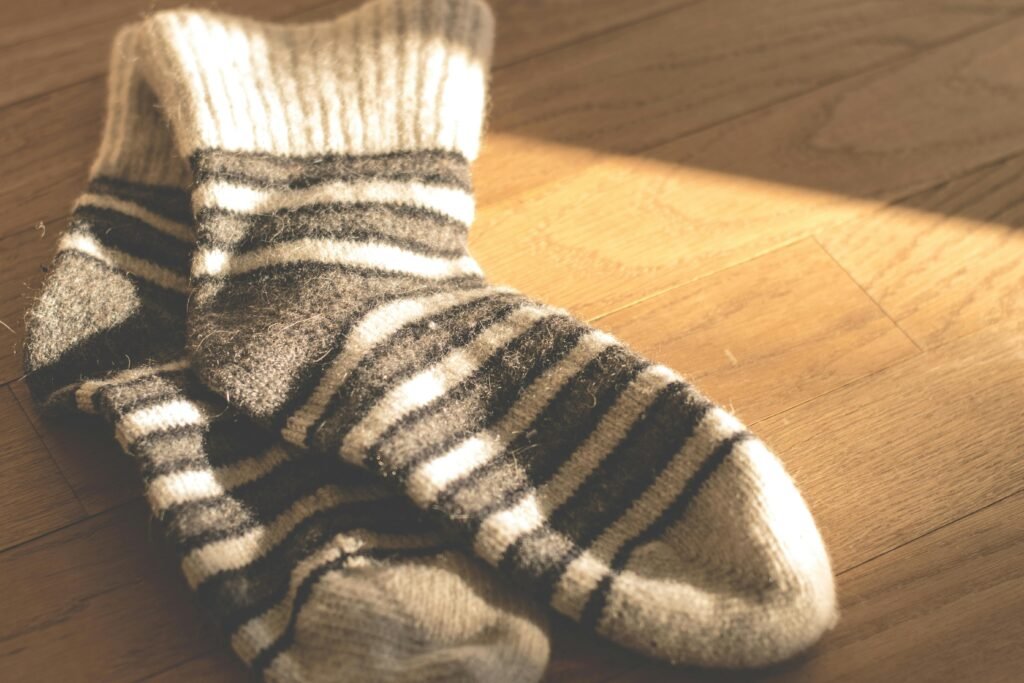Welcome to a helpful guide on enhancing the durability of your high socks through choosing the right materials. With so many options available, it can be overwhelming to decide which materials will provide the longevity you desire for your favorite socks. In this article, we will explore different material choices for high socks that will ensure they remain in top condition for years to come. Whether you prefer cotton, wool, or a blend of materials, you’ll learn how to make the best choice for your specific needs. Say goodbye to easily worn-out high socks and hello to long-lasting comfort and style!
“Enhancing Durability: A Look at Material Options for High Socks”
Have you ever worn a pair of high socks only to have them fall apart after just a few wears? If so, you know how frustrating it can be to invest in a pair of socks, only to have them quickly lose their shape and elasticity. So, what can you do to ensure that your high socks are durable and long-lasting? In this article, we will explore the various material options available for high socks and discuss which ones are the best for enhancing durability. Let’s dive in!

This image is property of images.pexels.com.
Choosing the Right Material for High Socks
When it comes to high socks, the material they are made from plays a crucial role in their durability. Different materials offer varying levels of strength, elasticity, and longevity. Let’s take a closer look at some of the most common materials used in high socks and their pros and cons.
Cotton
Cotton is a popular material for socks due to its softness and breathability. However, pure cotton socks may not be the most durable option for high socks, as they tend to wear out quickly and lose their shape over time. If you prefer the comfort of cotton but want a more durable option, consider socks made from a blend of cotton and other materials, such as polyester or spandex.
Wool
Wool socks are known for their warmth and moisture-wicking properties, making them a great choice for high socks, especially in colder climates. Wool is a durable material that can withstand a lot of wear and tear, making it a good option for those looking for long-lasting socks. However, wool socks may not be as soft or lightweight as other materials, so keep that in mind when making your selection.
Nylon
Nylon is a synthetic material that is commonly used in high socks due to its strength and elasticity. Nylon socks are known for their durability and resistance to wear and tear, making them a great choice for those looking for long-lasting socks. Additionally, nylon socks are often blended with other materials to enhance their performance, making them a versatile option for all types of wearers.
Polyester
Polyester is another synthetic material that is often used in high socks for its durability and moisture-wicking properties. Polyester socks are known for their strength and resistance to shrinking and stretching, making them a reliable choice for those looking for durable socks. Additionally, polyester socks are easy to care for and maintain, making them a convenient option for everyday wear.

This image is property of images.pexels.com.
The Best Material Options for High Socks
Now that we have explored some of the common materials used in high socks, let’s discuss which ones are the best for enhancing durability. To help you make an informed decision, we have put together a comparison table outlining the pros and cons of each material.
| Material | Pros | Cons |
|---|---|---|
| Cotton | Soft, breathable | Prone to wear and tear, loses shape over time |
| Wool | Warm, moisture-wicking | Not as soft or lightweight as other materials |
| Nylon | Strong, elastic | Less breathable than natural materials |
| Polyester | Durable, moisture-wicking | Not as soft or natural as cotton or wool |
Based on the information provided in the comparison table, nylon and polyester emerge as the top choices for enhancing durability in high socks. Their strength, elasticity, and resistance to wear and tear make them ideal materials for those looking for long-lasting socks that can withstand rigorous use.

This image is property of images.pexels.com.
Conclusion
When it comes to selecting high socks that are both comfortable and durable, the material they are made from is key. By choosing socks made from materials like nylon or polyester, you can ensure that your socks will maintain their shape, elasticity, and strength over time. Keep in mind that each material has its unique pros and cons, so it’s essential to consider your preferences and needs when making a decision. We hope this article has been helpful in guiding you towards enhancing the durability of your high socks. Happy sock shopping!
